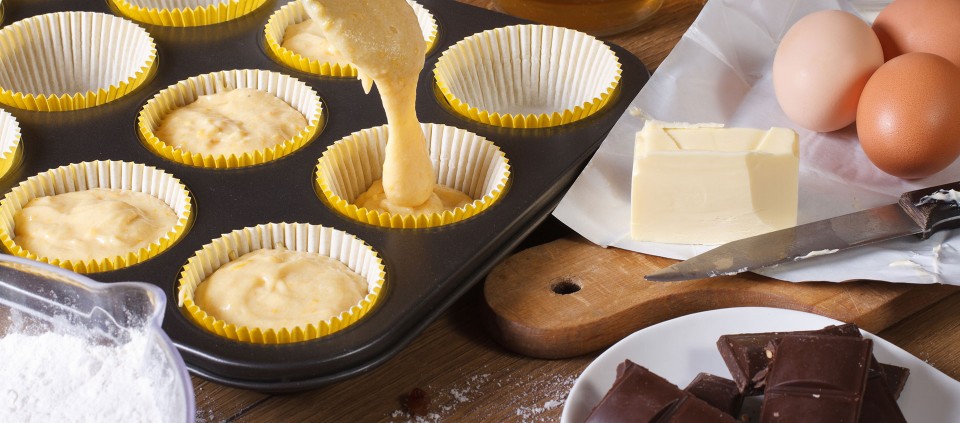Seven Tips for Better Baking from Kripalu’s Culinary Ambassador

My first restaurant gig was baking for a small cafe, and later I baked for a luxury hotel. Pies, crepes, petit fours—I did it all. What I love about baking is how chill it is. There’s a slower flow than you experience in a hot kitchen—you can’t rush it and you can’t control everything. The humidity, the strength of your yeast or sourdough starter, even the season of the year, all play a part. Once you put it in the oven, you have to surrender to the outcome.
That said, here are a few tips for bringing more ease and enjoyment into your baking.
1. Get organized before you start mixing.
Just like cooking, baking benefits from an organized mise en place—“everything in its place.” Measure out your ingredients, wet and dry, ahead of time; mis-measuring is one of the biggest pitfalls for bakers. Then you can stay relaxed once you start mixing and folding, instead of scurrying around trying to gather what you need between steps.
2. Make it ahead of time.
There are all kinds of ways to make baking easier by doing some of it (or all of it) ahead of time. Instead of buying frozen cookie dough, make your own—roll the dough into a log that you can easily slice, and keep it in the freezer wrapped in parchment paper. You can freeze scones once you’ve cut them, and even an entire muffin tin with the batter portioned out. To bake, bring to room temp first, or just keep it in the oven a little longer. If you’re baking pies for the holidays, make the dough for the crust days (or even weeks) early, and freeze or fridge it until you’re ready to roll it out. You can bake cakes a day or even two ahead of time; letting it sit a bit will make icing and slicing easier.
3. Know your oven.
Some ovens run hot, while others take a little longer than the recipe predicts. If your oven heat is uneven, you’ll need to rotate your cookie sheet or baking dish to get a good browning on all sides. Get to know your oven so you can avoid burning or under-baking. Also, baked goods, just like meat or vegetables, continue to cook for a little while after you take them out of the oven, so don’t let your cookies sit on a hot tray if they’re perfectly done.
4. Remember that mistakes can often be fixed.
While baking is more of a science than cooking—which is why people are often intimidated by it—don’t be afraid to try fixing a misstep at the last minute. Dough’s too wet? Go ahead and throw in a little flour at the end. Or cut in more milk if it’s too dry. If something comes out of the oven too crisp, cover it while it’s cooling; the heat will create a little steam and help soften it.
5. Experiment with substitutes.
At Kripalu, we sometimes make our own gluten-free flour using coconut, rice, oat, almond, and pecan flours, and we’ve been experimenting with using green banana flour in our date bread. Flaxseed is a great substitute for eggs; for sweeteners, we use maple syrup, honey, and coconut sugar, which has a lower glycemic index than cane sugar. To make vegan whipped cream, blend the cream from the top of a can of coconut milk with maple syrup.
6. Let dessert be a special occasion.
Worried about sugar intake? Instead of eating dessert every day, enjoy it a couple of times a week, and use the highest-quality ingredients so you can have just a small piece (or one cookie instead of six) and still feel totally satisfied. If you really want to limit your sugar intake, avoid highly processed foods, which is where most of the sugar in our diet comes from.
7. Find your soundtrack—or try mine.
My favorite music to bake to is old-school reggae: Black Uhuru, Steel Pulse, Sly and Robbie, and, of course, Marley!
Jeremy Rock Smith, Kripalu faculty and a graduate of the Culinary Institute of America, began his career in classical French cuisine.
Full Bio and Programs